Short or Long-Travel: Which Is The Best All-Round MTB?
If you want one bike to do everything, how much travel should it have? All bikes have to find a compromise between climbing and descending performance, and suspension travel is usually seen as a good indicator of where a bike sits on that spectrum.
But recently, short-travel trail bikes have become a lot more capable, while long-travel bikes have got much better at climbing. So how much slower is a modern long-travel bike uphill? And what are the differences downhill?
Caught up in all this is the question of tire choice. How much of the difference in climbing speed between an enduro bike and a trail bike is down to the tires? Can fast-rolling tires close the gap? And can sticky tires make a short-travel bike descend as well as a long-travel one? Let's find out.
The bikes
To make things as comparable as possible, I got hold of a Nukeprof Reactor RS and a Nukeproof Giga RS. The Reactor has 130 mm of rear travel and 150 mm up front, while Giga serves up 170 mm (rear) and 180 mm (front). These models have identical brakes, drivetrains, and cockpits. With the same wheels and tires fitted, only the frame and fork are different. Both use full-carbon frames and RockShox Ultimate-level suspension. The Reactor has a Lyrik fork to the Giga's Zeb, but the difference in chassis diameter is appropriate to the travel offered in each case.
Although the photos used here were taken with a coil shock fitted to the Giga, the testing was carried out with a RockShox Super Deluxe air shock to match the shock on the Reactor. I upgraded the rear rotor size on the Reactor to 200 mm so both bikes could accept the same wheels for comparative testing.
I set both bikes up with 30% shock sag and suspension settings as I would normally have them.
For the most part, I used the wheels that came stock on the Reactor for both bikes to remove the variable of tire choice. These tires were a Maxxis Dissector, EXO+ casing, MaxTerrra compound (rear) with a Maxxis Assegai, EXO casing, MaxxTerra compound (front). For brevity, I'll call these the "trail" tires from now on. Fitting these tires and the air shock to the Giga dropped its weight to a respectable 15.2 Kg - only 800 g (1.8 lbs) more than the Reactor with the same wheels.
I tested with lighter and faster-rolling "trail" tires (left) and stickier "enduro" tires (right).
I also tested with a stickier pair of tires (fitted to another alloy wheelset for easier wheel swaps). These were a Maxxis Assegai in DoubleDown casing, MaxxGrip compound on the rear, with a Schwalbe Magic Mary, SuperGravity casing, Soft compound, on the front. We'll call these the "enduro" tires. These wheels/tires weighed 600g more than the trail wheels/tires.
Climbing
For the climbing test, I used a pair of SRM power meter pedals to control my effort, which I kept at a steady 250 W. I rode both bikes up the same gentle and smooth fire road climb. I used a short climb so I could do five laps on each bike in quick succession and take an average. If I only did one or two longer climbs on each bike, there would be no way of knowing if any difference in times was down to the bike or just a fluke.
I did this first with the trail tires at my usual riding pressures (23 and 26 psi) then I re-tested the Reactor with the enduro tires. Here are the times:
As you might expect, the Giga was slower on average than the Reactor, but the average time was only 0.9% slower. Because the Reactor wasn't consistently quicker, and the average difference between the bikes was so small, we can't be sure from these numbers if the difference between the bikes is real or just a fluke. In science terms, the difference wasn't statistically significant.
But even if we take the 0.9% difference at face value, that's about what we'd expect from the weight difference between the two bikes alone, suggesting the travel per se (i.e the pedalling efficiency) wasn't having any effect.
In contrast, with the enduro tires fitted, the Reactor went 4.1% slower, or 3.4% slower than the Giga with the trail tires. In both cases, these are statistically significant differences, because the Reactor with Enduro tires was consistently slowest. To give that some context, over a half-hour climb, the enduro tires would add about one minute and fourteen seconds to the Reactor's time. Or to go at the same pace, you'd need to produce about 260 W instead of 250 W; if you're already working hard, that could be very noticeable.
The added weight of the heavier tires would only be expected to slow things down by at most 0.6%, so most of that difference is down to rolling resistance. This added drag will make covering ground slower on the flat and even downhills too (so long as traction and braking aren't what's limiting speed).
Subjectively, you can feel a little pedal bob from either bike, but there isn't dramatically more with the Giga. The position is quite different due to the Reactor's lower stack height and slacker seat tube angle (74.5° vs. 78°); this stretches out the spine which feels much less comfortable to me, especially on long climbs. Doing timed testing over technical climbs is virtually impossible because the time can vary so much from one run to the next depending on line choice, technique and luck, but when riding over bumpy terrain the Giga is noticeably smoother. The softer suspension obviously helps here but having your weight further in front of the rear axle also reduces how much your weight lifts when the rear wheel moves over a bump. Though I can't put a number on it, I much preferred the Giga for technical climbs.
Descending
To see how they compare for descending, I chose a short local trail I know well with a good mix of roots, rocks, steep twisty sections and flat fast sections. It's not the most technical trail in the world and it's definitely not the roughest, but on the day of testing (which was a couple of days before taking these photographs), it was wet and slippery, making it a good challenge. To level the playing field and keep things simple, I stuck with the trail tires on the Giga and the enduro tires on the Reactor.
The Giga went first, and despite doing two laps to get up to speed on the course before getting the timer out, I shaved 2-3 seconds off my time from one run to the next. This is always a problem with timed testing. My first time on the Reactor (my fourth timed run of the day) matched the first run on the Giga. It improved from there but levelled out at one minute and sixteen seconds.
I did one more run on the reactor with the trail tires and matched my fastest times on the Reactor, suggesting the stickier tires weren't much of an advantage on this course anyway. I'm sure that on a more treacherous course - or in the hands of a rider who is better at finding the limit of grip - the enduro tires would become a significant advantage.
Subjectively, the enduro tires felt much more damped and surefooted and I was locking up less on the steep sections, but this didn't seem to translate into more speed for me. Even with the sticky tires on the Reactor, the Giga felt much smoother, calmer and more stable. The higher bar and slacker head angle combined with suspension that feels more settled "in the travel" makes going faster feel more within my comfort zone. I also felt like there was more time left on the table with the Giga, whereas the last two runs on the Reactor would be hard for me to improve on.
Because there are so many variables at play when descending, I wouldn't read much into the times themselves. But they reveal that, although I felt closer to the edge on the Reactor, I was in fact going slower.
Closing thoughts and opinions
The biggest takeaway for me is just how much difference tire choice makes for climbing speed. Sure, the enduro tires I tested are pretty draggy, but they're not DH tires or mud spikes, and the trail tires (with an Assegai up front) are far from the fastest you can get. In fact, they held their own even on slippery descents.
I'm sure plenty of people don't care about going slightly faster or feeling more comfortable on steep descents; in fact, I often hear people say they find it more fun to have a sketchier ride at slower speeds. But if that's the case, why not fit slicker tires which will offer a real boost in climbing speed as a bonus? You could always use the lockout or run 10% sag if you want your enduro bike to feel sketchier! Personally, I have more fun on a long travel bike as it gives me the confidence to try new lines or ride them with more commitment.
The other surprise was that the Giga was barely slower uphill than the reactor with the same tires, and if you want to close the efficiency gap even more you could always use the lockout.
One caveat here is that a power meter may not be the best way to measure and control effort in an efficiency test when comparing suspension efficiency. I discuss this with Mike Levy in this episode of the Pinkbike Podcast, but the bottom line is that I think the power meter method is valid for measuring efficiency when pedalling sitting down (as in this test), but it doesn't work for out-of-the-saddle sprinting, and that's where the extra travel is more likely to be a disadvantage.
It's also fair to say the Reactor isn't the fastest-climbing short-travel bike out there. But the Giga probably isn't the most efficient among 170 mm+ bikes either. It's based on a downhill bike and it's designed to be even more gravity-focussed than Nukeproof's Mega enduro bike. More to the point, it doesn't have a huge amount of anti-squat, and higher anti-squat levels would probably make it climb even better. In one of Levy's efficiency tests, the 170 mm-travel Santa Cruz Nomad (which has quite a lot of anti-squat) was faster than the 130 mm-travel Ibis Mojo (despite having slower tires), suggesting a long-travel bike with generous anti-squat can be as just as efficient as a shorter travel one.
The bottom line is that ample suspension travel needn't be a hindrance uphill, but grippy tires will slow you down a lot. So if you want one bike to do everything, it might make sense to pick a long-travel bike with a spare set of fast-rolling tires for mellower rides.
Author Info:
Must Read This Week
Sign Up for the Pinkbike Newsletter - All the Biggest, Most Interesting Stories in your Inbox
PB Newsletter Signup
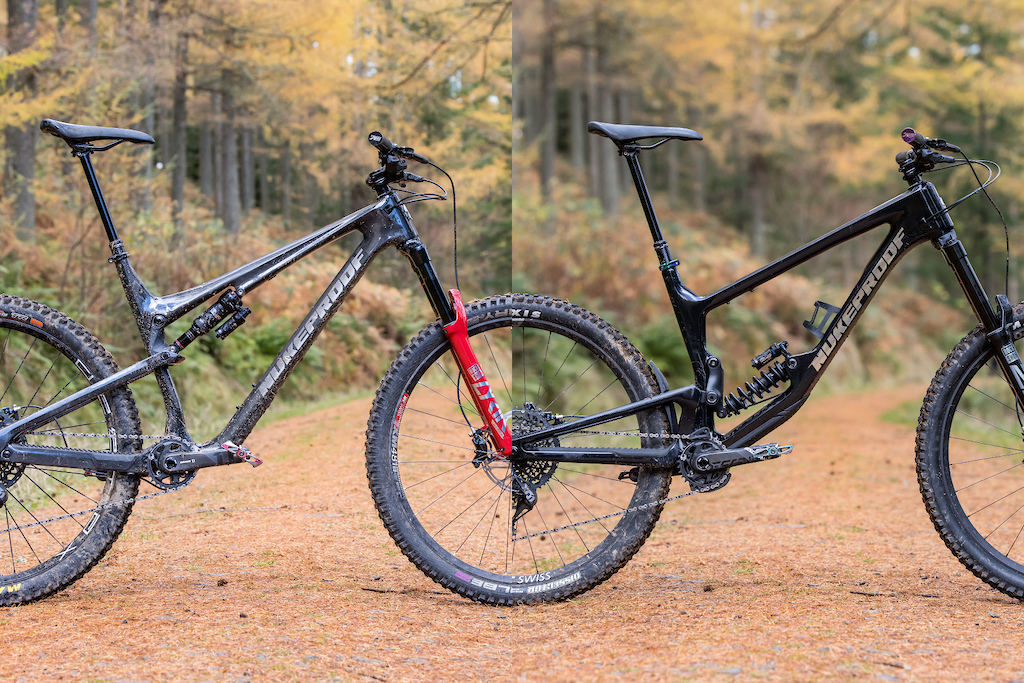
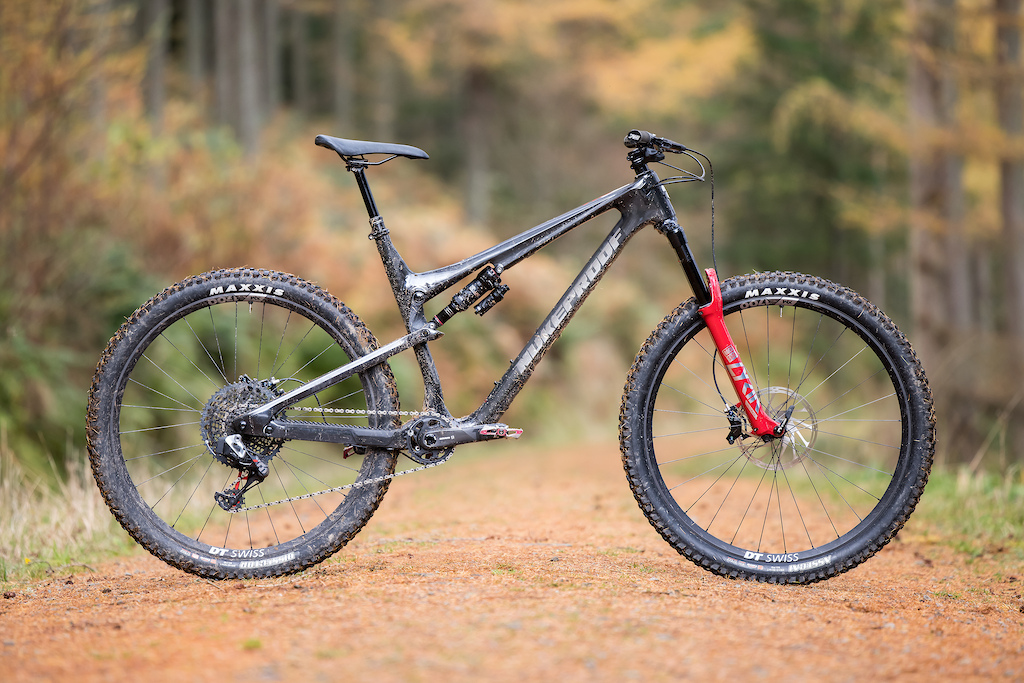
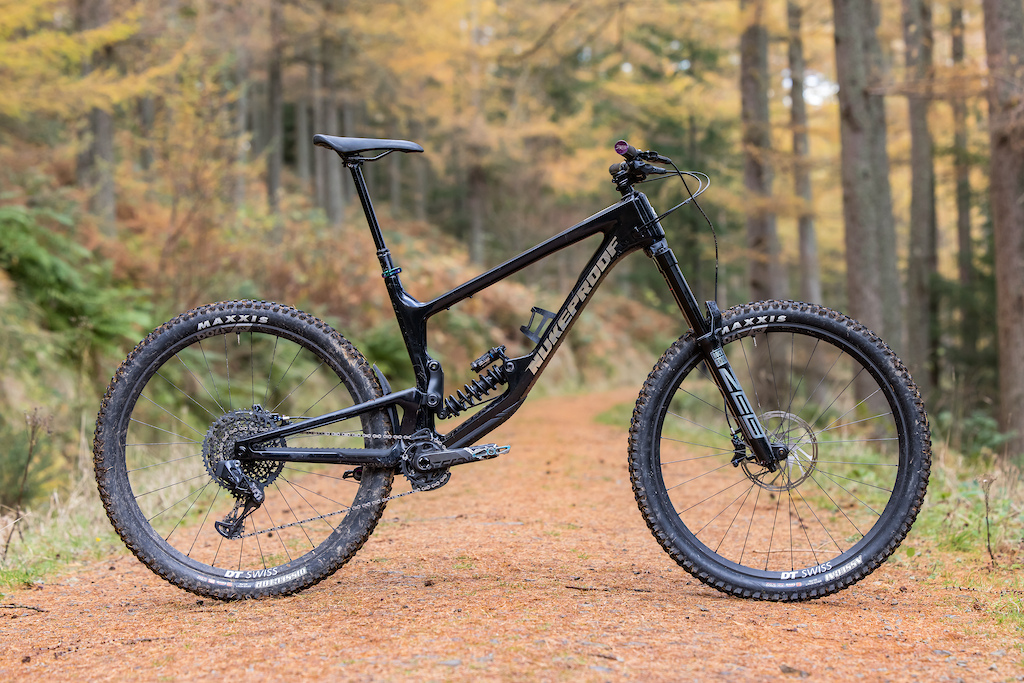

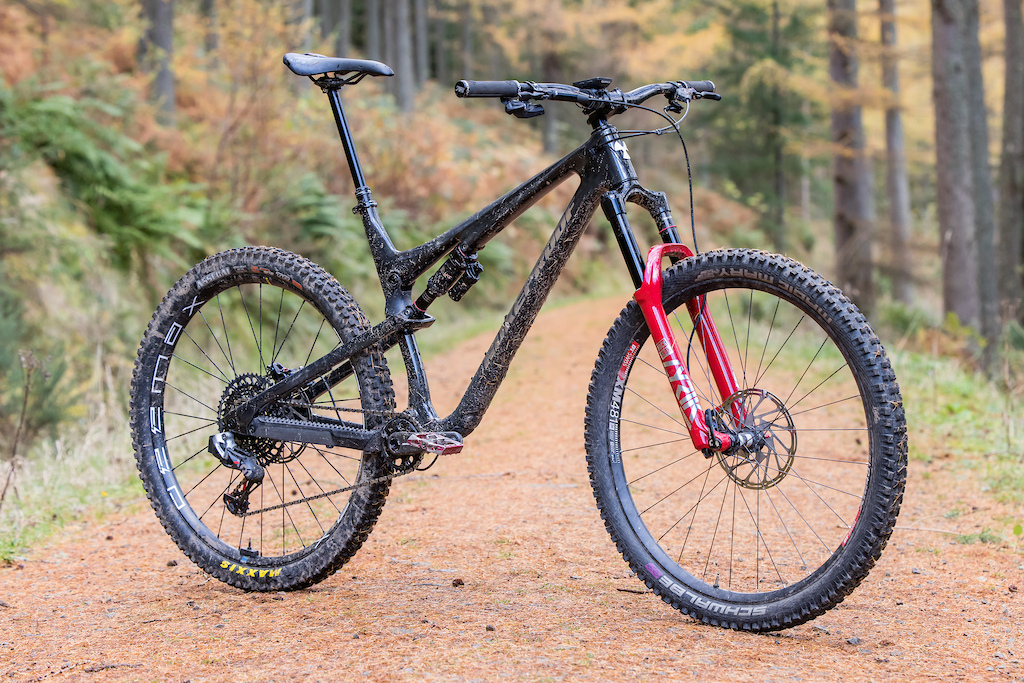
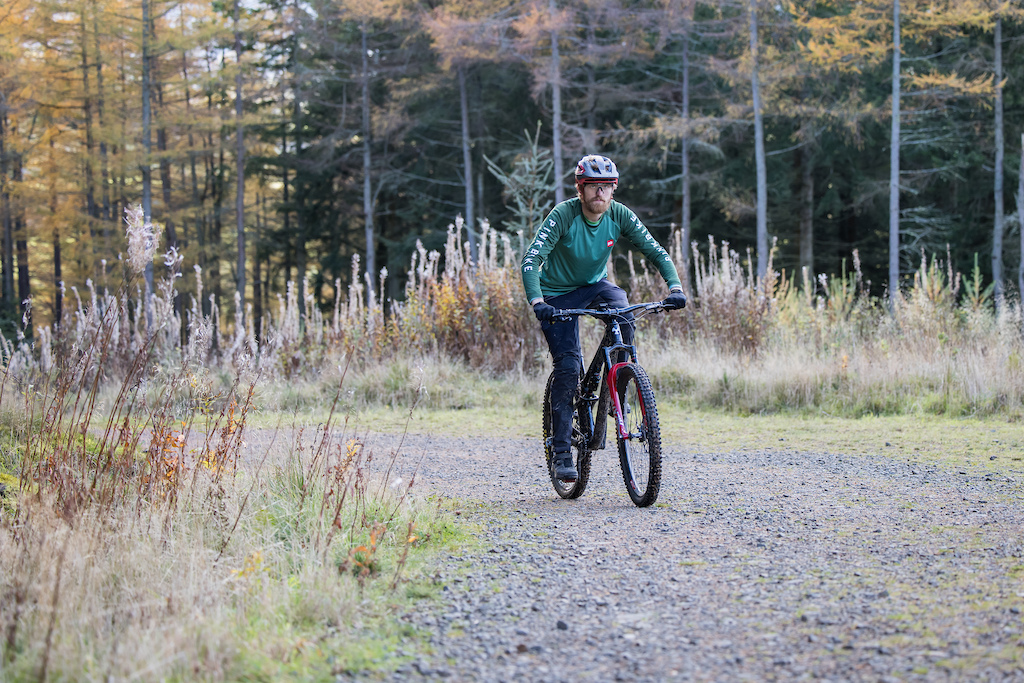

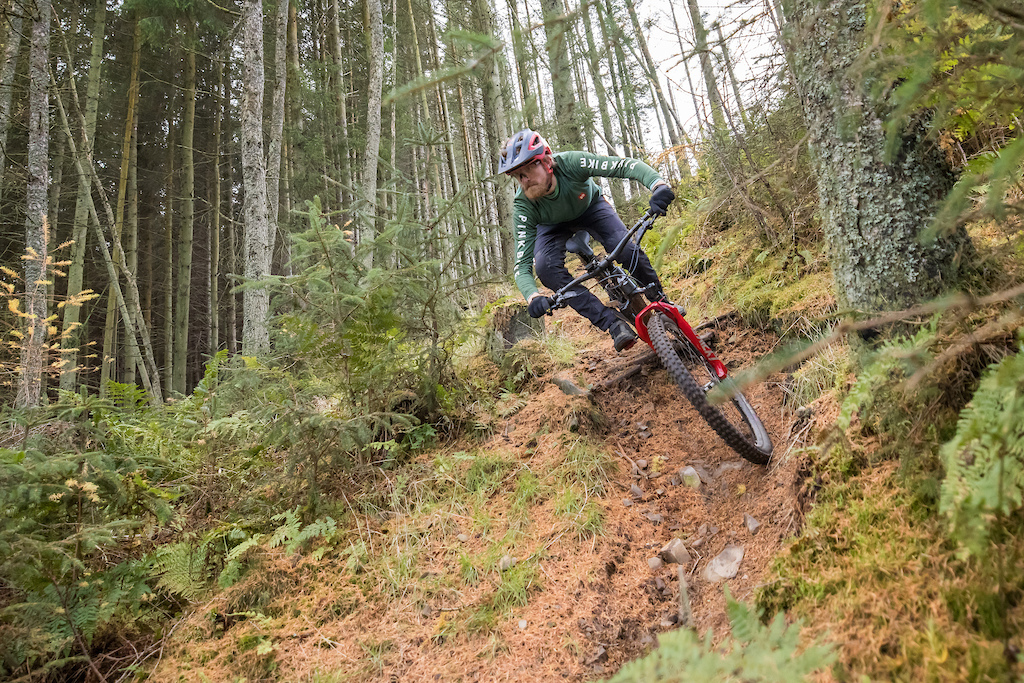


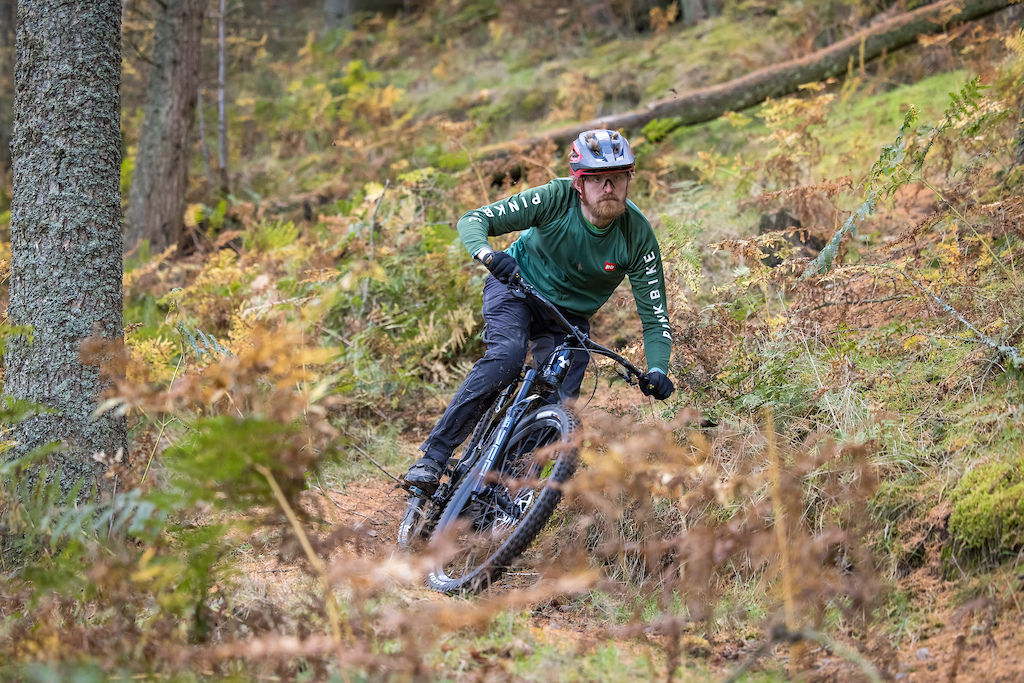
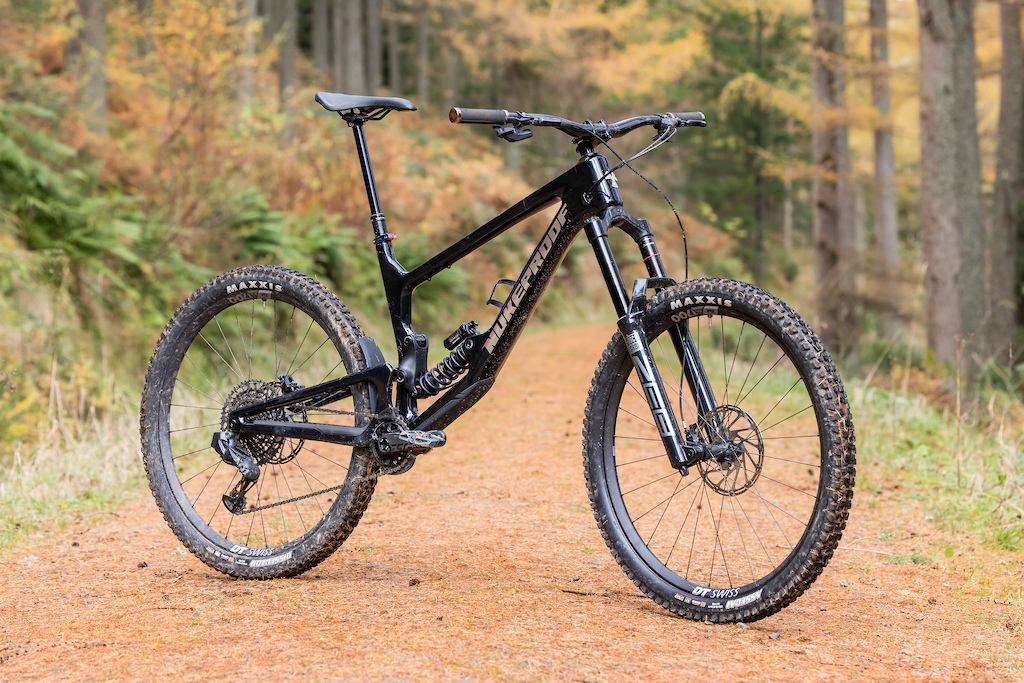

I ride the 160 the most, cos I take it out on xc rides in the evening near my house. But I'm dreaming of riding the dh rig down vertical walls while I do it. I don't give the 160 a second thought when I'm on the dh bike.
So is going to the shops for Rizla...
Longer distance = my bike
Shorter distance = my bike
Technical climbing = my bike
fire road climbing = my bike
Hauling a trailer = my bike
Jumps = my bike
Steeps = my bike
Thinking about = my bike
Talking about = my bike
I want to ride = my bike
Also, bimbling your way up a few climbs is by no means a real world test, take these 2 bikes out for a 20 mile loop and then tell me the enduro bike is best.
150mm is fine for “winch & plummet” type riding, however if it’s more rolling and traversing (as a lot of the riding in the UK can be) then it’s tiring and not a lot of fun.
@DCF mountain biking? Jokes aside, my point was that 150mm seems (at least to me) to cross the line into enduro, especially as I think (don't quote me) that there's usually also a jump in stanchion thickness to provide extra stiffness that frankly isn't needed in the "trail" category.
End of the day yes, it's a bike, ride wherever the hell you want. My point was simply that 150mm is only "short" if you're a 170-190mm enduro-bro.
Zeb / 38s are Enduro. Even if I could I wouldn't want to run a 36 diameter fork bigger than 160mm.
I agree that 150mm is the upper limit of aggressive trail/ all mountain / whateveryawannacallitthatsnotEnduro.
There are also tyres with incredible grip that don't roll like a boat anchor like the Ass-guy does (it was designed as a DH World up winning tyre after all - don't think Greg GOAT was worried about pedalling it for more than a 30 second print when he was asking Maxxis to make it for him).
Nothing is perfect but priorities surely focus on thrill rather than grinding up the hill once one is in the 150-150+ category of bike.?
I have a 2020 Optic (130/150 Lyrik) and 2020 Sight (155/ 170 Zeb), with very similar builds, and I would choose the Sight almost every day over the Optic due to the 2º steeper STA and the 5 mm longer chain stay. More centred wins the choice every time.
The Optic basically stays in my quiver so I have something almost as good to ride when the Sight needs something serviced that means it is not available to ride (and when I want something with a little lighter/ faster rolling tyres - still grippier than a Maxx Terrifying Dissector).
-Thats what she said.
This is on a 165/170mm enduro bike btw.
hes been enduring this for 2y and today as i write this we're going to test some bike because he finally wants a lighter one lol
That being said, testing on a fire road makes all the sense in the world. too many variables on singletrack.
So the difference in times on the fire road was just enough to account for the weight difference of the bikes?
Then why does Nukeproof even sell the Reactor?
Back I’m the day I was riding my Gary Fisher hardtail racer with a guy on a full suspension K2. I rode that K2 the week prior and couldn’t believe the loss on the road. But, then we got to this 3 mile rock ledge climb and I couldn’t hang. I watched that old school rear suspension soak up what was killing my forward momentum!
The right travel for the trail?
..so am I
That suggests to me that even putting the same watts into the pedals the time does in fact reflect chassis differences.
www.pinkbike.com/news/field-test-12-trail-and-downcountry-bikes-face-the-efficiency-test.html
I was going to say, time and heart rate as factors on top of a power meter should show expose the energy lost to suspension movement.
Anyhow, an interesting article none the less.
I’d rather pedal my HP Range for thousands of meters, never lose traction, not get a sore back, and have confidence to send any trail how I want to.
1% more climbing efficiency doesn’t mean shit if you spin out on a wet root.
But @sebstott the real difference between big and small bikes is the pop. 30% sag of 180mm is way more than 130mm and that is going to affect how playful the bike feels. Like you said, set it stiffer if you want, but then you are messing with the kinematics.
Think of this example, imagine you dropped a 50 pound weight on the pedal. With a fully rigid bike we can assume 50 pounds of force to the cranks (not exact obviously but for sake of simplicity). Now drop 50 pounds on a long travel full suspension bike, the suspension is going to absorb a chunk of that, cranks will see less than 50 pounds.
Now add a rider pushing down along with the weight. They can make it equal 50 pounds of force in the full suspension example, but they have to exert extra force to create that. The rigid example would not. In both cases the cranks see same power input, but the suspension bike requires more energy from the rider.
I’m sure this is overly simplistic, but seems to me measuring watts at the crank isn’t accurately measuring energy efficiency transfer, which would determine which bike is actually faster. all it shows is one can pedal harder to compensate, and the efficiency of the tires/parts down stream of the cranks.
I mainly ride a 180mm bike, and it's such a good climber (traction, anti squat...), ON STEEP STUFF. Last August I rode the Les Gets WC XCO track the evening before pros, and I suddenly hated it! Accelerating before a punchy technical bit? Forget it... Then stalling in that techy uphill? Enjoy your 70mm rear sag slamming that top tube in the crotch when unweighting the bike at a bad moment...
Etc.
There is so much more downsides to "more travel" than just the extra bob. This article is interesting but really not exhaustive
You really need to decide and specify the confidence level first, so lets start with an industry standard 95%.
A quick student's t-test yields a mean of 66.38 and 67.02 and a variance of 0.622 and 0.210, respectively. Put this together and we have a t-value of 1.57. Given the total of 8 degrees of freedom, this gives a p-value of ~15%, which means we are ~85% sure the mean test times of the bikes are different. This however is not enough to meet our confidence level so we can now say that the difference is statistically insignificant.
source: I look at a lot of p-values
I suspect if he excelled in his field then he wouldn't be half-assing articles for Pinkbike and Bikeradar, but that's just me.
Like I said, I'm probably in the minority of readers and point this out as an additional consideration for riders in similar areas. People love long travel rigs and you wouldnt believe how many enduro bikes are pedaled around my local trails.
I live in NW Arkansas, where most of the trails have 300-500ft elevation change from top to bottom. It’s rocky, there is a lot of technical climbing, and there is a broad mix of old and new school trails.
I’m lucky enough to have multiple bikes these days, so I think a lot about the differences between each. It’s still amazing how different a trail can feel depending on whether you bring a long-travel trail bike vs a progressive SS hardtail.
One VERY significant point I’d like to make in contrast to Seb’s article here is how much easier a lighter, shorter travel bike is to manage on the terrain I ride. My short travel bike leaves SO much more energy in the tank to attack technical challenges like step-ups and rocky technical climbs- especially once you begin to get tired.
Also, as someone who spends about 60% of my time on shorter travel bikes, I’ve noticed the exact opposite of Seb’s findings on the descents. I’ve been getting a lot of PRs on my shorter travel bike with lighter tires. I think this is because I can accelerate faster, and much of the descents here have tight rocky corners that scrub speed. While I feel more composed on my Ripmo, it’s only faster when the trails allow me to carry speed through the chunk that I just couldn’t on the shorter travel bike.
Lastly, I’ll address your main point, which is that the longer travel bike is just LESS FUN for 80% of my riding because they feel muted / dead. I know this is personal preference - and one that I’ve come to after a decade of riding hilly vs. truly steep terrain. But the same is true for Seth’s preferences for a longer travel bike… its the product of much more than tires / weight / travel numbers. I’d love to see a similar article written from the perspective of someone who lives in the middle of the USA and has different innate biases.
And, if most of the climbing was done in the saddle, then I can’t see this being a scientific experiment.
This is a cool concept though.. Pinkbike, give this guy the support to do this right the second time! More bikes, more riders, more time.
Trail use is 64HT/Short Chainstay 27.5
Big bike is 62HT/Long Chainstay 29
Both 160mm up front.
Both Enduro tires.
Fun Fun
Typically, they go together: more travel and more slack. If a person only rides steep, slow terrain - like a DH trials course - the ideal bike might have slack geometry and minimal travel. If the terrain is rough and fast, but not very steep, travel is valuable, but not slack geometry.
Few people ride to the limits of their travel, so I agree with you that geometry benefits more people, more of the time, than travel.
An enduro-oriented 160mm long travel bike needs some serious speed and slope to come alive. When it does, if you have the skills and like that kind of riding, it's an absolute hoot. If you mostly ride trails that don't allow that sort of speed, or you're a more conservative rider (perhaps because you're getting into middle age and don't want to deal with the consequences of crashing at higher speeds), then you'll probably have more fun on a shorter travel bike.
Thing is - taking a big bike (like the Giga) and turning it into a mid-sized bike for daily use means I would compromise most of my riding. My bike does very well all the stuff I ask of it on a daily basis. So I'd rather optimize for that. If you're at heart a big bike rider who only needs a bit of pop when they're "stuck" on tamer terrain, your approach makes sense. But if that terrain and that style of riding is what you'd most like to do, then the tradeoff doesn't make a lot of sense.
I went for the big-rig and just run it at 25% sag and in the steep/high flipchip setting. It's plenty poppy and nimble on the local trails and I know I can rip it round the DH park no problem, but I can't imagine ~20 fewer mm would make a vast difference on a road loop.
It's been a really satisfying discovery. I no longer feel like I'm missing out on significant speed on the buffed out stuff I ride often, and I feel a lot more confident charging rough sections. I've gone as far as to set up two sets of wheels. The "XC" set with the Mezcals, and the "Enduro" set with the DHF/Dissectors and ridiculously overbuilt wheels.
Is he saying that an XC style bike is hindering his climbing abilities?
Maybe he should have found an XC racer to do the actual test while he crunches the numbers.
I’m kinda with you on this- it doesn’t really work for me either. But it does beg the question of, with all of these geo advances in biking, why are XC racers still running low travel, low stack bikes?
That’s the kind of do-over I think this article deserves. Let’s get a broader range of bikes and riders, and see what’s actually happening on the trail!
I’m actually with you on this- I have horrible flexibility, and I can’t stay low for long.
But I do have core strength, so I find myself cranking out of the saddle more often than anyone around me. That being said, I have to be on low travel bikes because standing with “real” travel doesn’t last long..
This is a topic I’ve long pondered. And again, would love to see a full test of multiple bikes and some UCI pros in there. Nino?
What wasted power? This article just showed us there is no wasted power. At least between these two bikes..
When the first dedicated mountain bikes were being developed in the 1980s, they simply adopted the traditional 71° head-tube angle and 73° seat-tube angle from road touring bikes. Those angles barely changed for decades - some XC race bikes are still in the range of 70° and 73°. The change is starting to happen, though: plot a chart of head-tube angles, seat-tube angles, and normalized reach values for XC bikes launched in the past few years and it's clear what's coming.
It's even more interesting if we consider dynamic geometry (ex. head-tube angle on a steep descent or seat-tube angle on a steep climb). Mid-travel bikes often have slacker dynamic head-tube angles and steeper dynamic seat-tube angles than long-travel models. XC bikes will never need the dramatic static geometry of a long-travel bike, but the dynamic geometries for all categories are starting to converge - and the companies on the leading edge of this trend in the XC category will gain market share over their more conservative peers.
Good point!
Makes me feel a little better about me.
Re the low stack, at XC speed, aero matters even on the descents. Lower CoG, maximize front wheel traction, athletes are flexible, etc etc.
Thanks Bro! Bicycles and I never really got along, I’m a motorcycle racer.
But, it’s a challenge, and modern geo has made it a better experience all around.
I found the same in my own testing: putting my Enduro drivetrain on my Spur essentially made my 2 bikes complete a 45-minute loop at nearly identical times. With XC rear/ DC front tires on 1150-gram Berd wheels on the Spur instead, it's much faster on this particular route.
This is why it makes no sense to put big grippy tires on a short travel bike, you've negated all of the speed advantage and now you just have a 2012 enduro bike.
150/130 is squarely in the "mid-travel" range.
I can’t remember the last time my climb included a road, all my climbs are single track, much of them are technical.
This ^ would be a much better test bed for comparing climbing.
Comparing bikes based on gravel road climbing is no different than comparing bikes based on gravel road descending.
I’ve actually ridden in every state except Hawaii … but the only place I routinely used fire roads to access trails was WA.
Regardless, comparing bikes by climbing up a fire road is dumb.
I care about efficiency almost as much as DH fun, and lots of others on tight schedules do too.
Buy longer if you're a stronger climber.
You'll be a better "All-Mountain" rider in the end.
You need an identical twin Seb
And honestly, most of the people prefer to climb on mellow fireroads where they can talks to each others and dont burn their legs climbing up.
"Ok, cool. So we have to pick two bikes that really exemplify the benefits of what each category has to offer and compare them in a series of legitimate and varied terrains, features, and timed segments."
"Nah. We'll just grab two Nukeproofs and see what happens."
"?"
"!"
"*sigh*...ok."
At one point I had both a 130mm bike and a 165mm. Both were great but I ended up selling the 165mm one as I found I could do just about everything I needed on the shorter travel one.
Trials
XC
Bike Packing
Enduro Races
Alps
Bike Parks
Street
Whereas the bigger bike was only better at chunkier/faster DH
The test ended when the Tioga tyres slipped on a root and nearly spat me into an oak tree - as I was riding with recently cracked ribs that rather biased me toward the slower but safer Michelins...
You're a mediocre rider that can use all the help he/she can get: long travel
Yes, I ride a 160mm full susser
Then test the S4 with both the long and short chainstays. I suggest a something with many flat constant radii turns.
If I lived someplace like north Shore where the trails can handle wet weather riding it'd be a different story, and I'd probably have to push dual Marys uphill- but thankfully I can get all the benefits of low rolling resistance without too much worry of sketchiness of the semi-slick.
Try it, if you're used to something burly out back, the Razor feels like you just dropped 10 lbs.
Dunno what you mean about the behavior of the data...if yr a data guy, feel free to explain. It just seems that 5 climbs & 3 descents is not quite enough (esp with getting used to a bike) to really be conclusive.
Where the trail bike shines is on flatter single track. The steeper HTA and shorter wheelbase feels riding a jet ski compared to piloting a barg.
I wish I had the local trails to warrant an enduro bike, busy most of the trails are hand cut XC loops where the downs are over far too quickly.
Let’s compare some of the downcountry bikes from the test against the enduro bikes rather
It's the rider. If you are a very skilled rider, you'll be able to shred on a hardtail, much less a bike with suspension. As for me - I'm super grateful that I have 170mm of mistake-erasing coverage at both ends of the bike.
Would he/she/they fall in love, or go scrambling back to their XC bike ASAP?
Also about to build a ridiculous rigid mini mullet monstrosity cuz n+1.
Interesting comment about the difference in climbing position.
Maybe a shortish travel trail bike with a very upright seat angle would be the ultimate climber then?
More tests needed. Give this man a mountain of bikes, a clipboard and a tent.
If the stack height and reach are so high and long (and likely with short chainstays) that you can not weight the front appropriately in high speed and less than steep corners, than it may not be a good one bike fits all. But if there is room for you to adapt the front end to suit different riding places, then maybe that long travel bike could be the best one bike to rule them all. Trail bike to enduro bikes pedal, descend and climb so well no, one could easily make any of them their one bike so long as it handles your variety of cornering situations.
Time to do corner bike testing in these comparisons!! LOL
I recently bought a lowish end (£500) 100mm travel Hardtail with 650B wheels for when I lead rides with the Scouts, its surprisingly fun to ride, simple in design and still better than top end bikes from 15 years ago, also I don’t care if it gets trashed on the uplift trailer or crashed by one of the kids.
I also have a expensive Cotic Cascade gravel/MTB with 100mm travel Sids, it will do everything I want in a quirky and eccentric manner, though not for everyone for sure.
That being said, I do think that a bike like the Fuel and its 140mm of suspension is probably a great bike for most riders.
Interesting to see how limited the differences in efficiency are when you can just sit and spin smoothly up a fire road. I'm curious how something like their Scout hardtail would do too.
I'd also be interested in seeing the difference in timing on some sort of timed "course" that also has some technical climb features, etc. Also maybe break it up into a blue, black and double black descent. I'd imagine pro enduro/xc riders do this type of back to back testing, but you're less likely to see it for "trail" riding.
Snark aside, good write up Seb.
tl;dr: Most of it. The rest is mindset.
It's a quality article, dont get me wrong, but still- why do people insist on using time to measure what's "better". There are so many better, more relevant metrics.
What metrics do you prefer?
If I recall, the anti squat is pretty low on it.
Long travel: higher ACTUAL speed (descending)
If you don't race, be sure to under-bike for best results.
www.youtube.com/watch?v=zGO2pu0JX_8
There can be additional considerations in mass-start races. For example, imagine a course that's mostly rough, with few opportunities to pass on rough sections, and smooth climbs that have room to pass. A chassis with little or zero suspension could be an advantage in this scenario if the unsuspended riders can pass suspended riders on the climbs and get to the front of the group before entering the rough sections, thereby blocking the potentially faster riders in the rough sections.
What is your height please? I wonder about bike size when you tested Giga XXL
thanks
Works good.